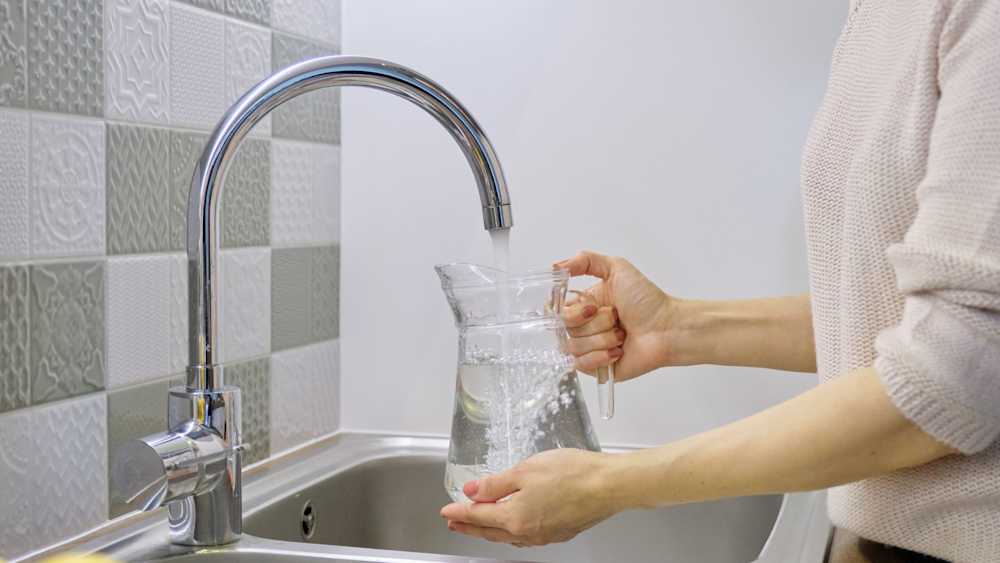The European Union’s new Drinking Water Directive (EU) 2020/21841 was passed into law in the member states in January 2023. The directive outlines EU-wide requirements for materials that come into contact with water, including pipes, taps, and sealants. Laboratory testing is needed to ensure that these requirements are met. If you wish to have your materials tested according to the revised Drinking Water Directive, do not hesitate to contact our experts through the form at the bottom of this page.
Testing requirements for materials in contact with drinking water
Article 11 of Directive (EU) 2020/2184 defines the quality requirements for materials that come into contact with water. Such materials must not have detrimental effects on human health, adversely affect the taste, color, or smell of water, lead to increased microbial growth, or release significant quantities of contaminants into water.
In addition, the European Chemicals Agency (ECHA) is preparing lists of approved starting substances (so-called European positive lists2) for different types of materials that come into contact with water. For each substance, appropriate testing methods and migration limits will be established. If a substance is not included in a European positive list, it may only be used if there is no possibility of migration into water at levels higher than 0.1 μg/l.
ECHA’s positive lists are to be published by the 12th of January 2025. Until then, materials are assessed according to established national and international standards. For example, the German Environment Agency (Umweltbundesamt, UBA) has developed evaluation criteria for materials and substances that come into contact with drinking water, and these criteria have become legally binding in 2021 and 2022.
Lists of approved starting materials will be defined individually for each type of raw material. In addition, the testing requirements defined in Directive (EU) 2020/2184 also vary between the raw materials (Table 1).
Table 1. Testing requirements for materials that come into contact with drinking water according to Directive (EU) 2020/2184
Quality parameter | Testing standards | Organic materials | Metallic materials | Cementitious materials | Enamels and ceramic materials |
Odor and flavor | EN 14395, EN 1622 | ✓ |
| ✓ |
|
Color and turbidity | ISO 7027, ISO 7887 | ✓ |
| ✓ |
|
Leaching of total organic carbon | EN 12873-1+2, EN 1484 | ✓ |
| ✓** |
|
Surface residues | EN 16057, EN 16058 |
| ✓ |
|
|
MTC(tap)* of positive list substances | EN 14395 | ✓ |
| ✓** |
|
Unexpected substances (GC-MS) |
| ✓ |
| ✓** |
|
Compliance with composition lists |
| ✓ | ✓ | ✓ | ✓ |
Enhancement of microbial growth | EN 16421 | ✓ |
| ✓** |
|
* MTC(tap) = maximum tolerable concentration at the tap
** If the material contains organic ingredients
Testing requirements are stricter for organic and cementitious materials. Impact on organoleptic properties, enhancement of microbial growth, and leaching of total organic carbon only need to be tested for these material types, as the risks are considered low for metallic and ceramic materials. Testing of unexpected organic substances with gas chromatography-mass spectrometry (GC-MS) is a similar requirement to that of NIAS screening of food contact materials.
Dynamic watch list of substances of concern
The revised Drinking Water Directive also obligates member states to monitor the concentrations of substances included on a European Commission watch list of substances of concern.3 The Commission will update this dynamic watch list periodically. As of January 2023, the watch list contains just two substances: 17-beta-estradiol and nonylphenol.
Article 13(6) of the Drinking Water Directive outlines the Commission’s intention to add microplastics to the list of substances of concern by January 12, 2024. This may impact the manufacturers of plastic materials that come into contact with water, as microplastics may originate from the wear and tear of such materials.
How does the revised Drinking Water Directive affect businesses?
The new Drinking Water Directive is likely to have a predominantly positive impact on companies that produce materials in contact with water. The directive replaces national regulations and certifications, thus making it easier to market and sell products across the EU.
It will be difficult, however, to obtain approval for a material if its starting substances are not listed on ECHA’s European positive lists. This is likely to have a negative impact on the producers of copper pipes, for example, as it seems that some common materials for dezincification prevention are not going to be listed.4
References:
2 Information on the European positive lists on the ECHA website
3 Commission watch list of substances of concern
4 Concern over the exclusion of dezincification substances was raised by the Finnish government in article 4.2.1.3 of degree 196/2022 (document in Finnish)

